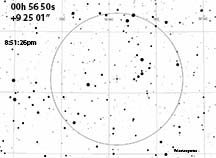
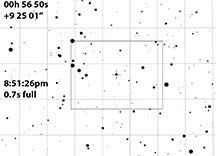
Occ durations for Kirk and RN. My event was longer than max predicted, and suggests the asteroid was at least as large as predicted, and shifted north a bit. Karl may have had a short event, with close examination.
This is a bright event, lasting up to 0.65 sec so even at 2x we should get good data. It's a wide path, and Kirk and almost Karl are inside the path. I will be closer to the centerline at Twin Gatges upper UCSC.
Alt=36, Az=253 in the WSW, in Pisces 10deg upper left of Algenib (lower left corner star of the Great Square of Pegasus)
I observed this, the first in a pair of occultations (Erfordia the 2nd, 20 min later), from the east side of the Twin Gates bike path crossing, upper UCSC. My scope in fact was right at the point in the gate where the bikes exit, in order to position correctly to get both targets. Clear skies.
Got a good recording, and a solid occultation. Right at predicted moment, but 70% longer duration than predicted maximum. Interesting!
magDrop report: percentDrop: 94.8 magDrop: 3.207 +/- 1.234 (0.95 ci)
DNR: 3.91
D time: [04:51:25.7740]
D: 0.6800 containment intervals: {+/- 0.0161} seconds
D: 0.9500 containment intervals: {+/- 0.0408} seconds
D: 0.9973 containment intervals: {+/- 0.0819} seconds
R time: [04:51:26.8750]
R: 0.6800 containment intervals: {+/- 0.0161} seconds
R: 0.9500 containment intervals: {+/- 0.0408} seconds
R: 0.9973 containment intervals: {+/- 0.0819} seconds
Duration (R - D): 1.1010 seconds
Duration: 0.6800 containment intervals: {+/- 0.0238} seconds
Duration: 0.9500 containment intervals: {+/- 0.0537} seconds
Duration: 0.9973 containment intervals: {+/- 0.0975} seconds
Note that the occultation lasted more than 50% longer than the predicted maximum. And the data below is very solid. Oblong asteroid? Low albedo?
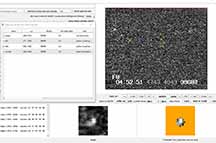 |
 |
 |
 |
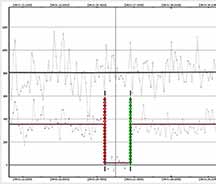 |
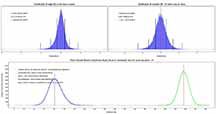 |
report sent to IOTA 1/29/25
I have a positive 0.2669 sec. event for Valentaugustus on Jan 15, 2x at home. The drop is noisy but passes false positive. There is a drop, not as deep, immediately previous to the one PyOTE found, but again could be just noise. PyOTE does not recognize the previous drop even by manual D/R. I'm attaching a PyOTE zoom with and without the no_star for clarity.
PyOTE found a 0.26 sec event (predicted max 0.65) near predicted time.
There is a drop immediately previous to this, not as deep, but PyOTE does not recognize it as an event.
magDrop report: percentDrop: 80.3 magDrop: 1.761 +/- 1.081 (0.95 ci)
DNR: 1.94
D time: [04:51:26.5697]
D: 0.6800 containment intervals: {+/- 0.0190} seconds
D: 0.9500 containment intervals: {+/- 0.0689} seconds
D: 0.9973 containment intervals: {+/- 0.1669} seconds
R time: [04:51:26.8366]
R: 0.6800 containment intervals: {+/- 0.0190} seconds
R: 0.9500 containment intervals: {+/- 0.0689} seconds
R: 0.9973 containment intervals: {+/- 0.1669} seconds
Duration (R - D): 0.2669 seconds
Duration: 0.6800 containment intervals: {+/- 0.0300} seconds
Duration: 0.9500 containment intervals: {+/- 0.0850} seconds
Duration: 0.9973 containment intervals: {+/- 0.1845} seconds
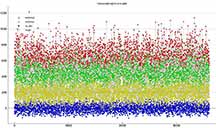 |
 |
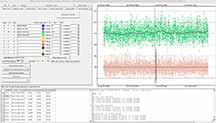 |
 |
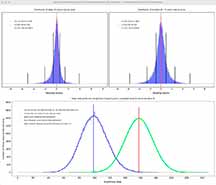 |
Got a recording,, apparently with some noise or thin cloud interference. Looks like a miss? But Kirk and my timings suggest he should have had a short, perhaps very short, positive event. When instructed to find an event using the min/max method, it found an event near the beginning of the recording. But this is a very noisy period even on both sides of the possible event, and the brighter of the two ref stars also shows a noticable drop here. The smoothing length was too big to capture these short wiggles (ground vibration from walking around??) in the calibration. The offset used was also far too large to be reasonable for such a small chip.... 13 seconds.